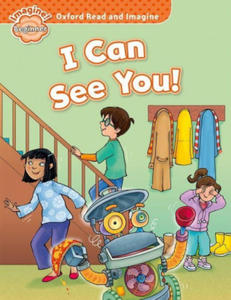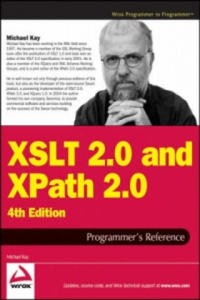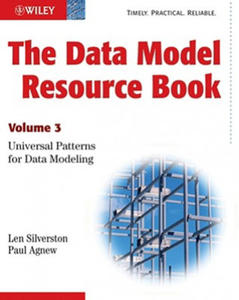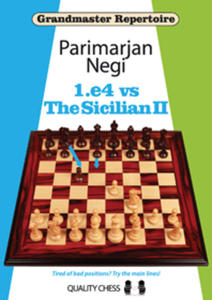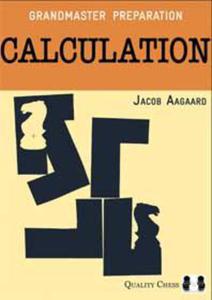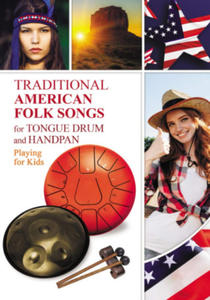libristo i can see you the minneapolis series book 1 4154837
- znaleziono 12 produktów w 4 sklepach
Can You See What I See? 100 Fun Finds Read-and-seek (Scholastic Reader, Level 1) Scholastic Inc.
Książki / Literatura obcojęzyczna
From the photographer of the bestselling I Spy books and creator of the Can You See What I See? series is a new search-and-find reader chock-full of fun! Children can read the simple text and use the picture clues to search twelve photos for 100 hidden objects! An illustrated word list in the back of the book provides extra support for the newest readers!
Sklep: Libristo.pl
Oxford Read and Imagine: Beginner: I Can See You! Oxford University Press
Książki / Literatura obcojęzyczna
9-level fiction series that grows up with the young learners First three levels are for pre-school Exciting stories - follow Rosie, Ben, and Grandpa on their adventures Stories at Levels 1 to 6 link to non-fiction Oxford Read and Discover Readers In-book activities include Cambridge Young Learners Exams preparation and KET and PET at levels 5 and 6 Audio in both American or British English Free audio forEarly Starter, Starter, and Beginner levels Selected print-readers are also available as interactive e-books with animated stories, pop-up vocabulary support, and games Online Teacher's Handbook with Photocopiable Worksheets and AnswerKeys
Sklep: Libristo.pl
Spalona Żywcem Wyd. Kieszonkowe - Souad
Książki & Multimedia > Książki
Opis - Pierwsze na świecie świadectwo ofiary zbrodni honorowej. Miała siedemnaście lat i zakochała się: zhańbiła rodzinę. Więc rodzina wydała na nią wyrok śmierci... Pokochała go pierwszą miłością. Myślała, że się z nią ożeni. Ale ukochany zniknął, a ona odkryła, że jest w ciąży. A w jej świecie to najcięższa zbrodnia... W zapomnianej przez Boga wiosce w Cisjordanii kobiety są warte mniej niż zwierzęta domowe. Tu mężczyzna jest panem życia i śmierci żony, córki, siostry. Brat może bezkarnie zabić siostrę, matka - córkę, kolejną bezużyteczną dziewczynkę, jaka się urodzi. Tu kobiecie odbiera się godność, a nawet życie zgodnie z odwiecznym obyczajem i uświęconą tradycją. A śmierć jest karą dla dziewczyny, która zhańbi rodzinę. Tak jak Souad. Wyrok wydaje jej ojciec. Szwagier dokonuje egzekucji. Oblewa Souad benzyną i podpala... SOUAD przeżyła - cudem, ale rodzina usiłowała zabić ją nawet w szpitalu. Na zawsze jednak pozostanie straszliwie okaleczona - na ciele i duszy. I wciąż musi się ukrywać; dopóki żyje, jej rodzinę okrywa hańba. Spalona żywcem, opublikowana pod pseudonimem szokująca opowieść o piekle, jakim było jej dzieciństwo i młodość, stała się międzynarodowym bestsellerem. Wydana w 37 w krajach książka przerywa tabu milczenia wobec istniejącej nadal w krajach muzułmańskich barbarzyńskiej tradycji. Nieludzkiego obyczaju, prawa mężczyzn, na mocy którego co najmniej pięć tysięcy kobiet pada co roku ofiarą zbrodni honorowej. Nazwa - Spalona Żywcem Wyd. Kieszonkowe Autor - Souad Oprawa - Miękka Wydawca - Amber Kod ISBN - 9788324159406 Kod EAN - 9788324159406 Wydanie - 1 Rok wydania - 2016 Tłumacz - 31182,maria rostworowska; Format - 110 x 175 x 14 Ilość stron - 224 Podatek VAT - 5% Premiera - 2016-06-23
Sklep: InBook.pl
XSLT 2.0 and XPath 2.0 Programmer's Reference 4e John Wiley & Sons Inc
Książki / Literatura obcojęzyczna
This book is primarily a practical reference book for professional XSLT developers. It assumes no previous knowledge of the language, and many developers have used it as their first introduction to XSLT; however, it is not structured as a tutorial, and there are other books on XSLT that provide a gentler approach for beginners. The book does assume a basic knowledge of XML, HTML, and the architecture of the Web, and it is written for experienced programmers. There's no assumption that you know any particular language such as Java or Visual Basic, just that you recognize the concepts that all programming languages have in common. The book is suitable both for XSLT 1.0 users upgrading to XSLT 2.0, and for newcomers to XSLT. The book is also equally suitable whether you work in the Java or .NET world. As befits a reference book, a key aim is that the coverage should be comprehensive and authoritative. It is designed to give you all the details, not just an overview of the 20 percent of the language that most people use 80 percent of the time.It's designed so that you will keep coming back to the book whenever you encounter new and challenging programming tasks, not as a book that you skim quickly and then leave on the shelf. If you like detail, you will enjoy this book; if not, you probably won't. But as well as giving the detail, this book aims to explain the concepts, in some depth. It's therefore a book for people who not only want to use the language but who also want to understand it at a deep level. The book aims to tell you everything you need to know about the XSLT 2.0 language. It gives equal weight to the things that are new in XSLT 2.0 and the things that were already present in version 1.0. The book is about the language, not about specific products. However, there are appendices about Saxon (the author's own implementation of XSLT 2.0), about the Altova XSLT 2.0 implementation, and about the Java and Microsoft APIs for controlling XSLT transformations, which will no doubt be upgraded to handle XSLT 2.0 as well as 1.0. A third XSLT 2.0 processor, Gestalt, was released shortly before the book went to press, too late to describe it in any detail. But the experience of XSLT 1.0 is that there has been a very high level of interoperability between different XSLT processors, and if you can use one of them, then you can use them all.In the previous edition we split XSLT 2.0 and XPath 2.0 into separate volumes. The idea was that some readers might be interested in XPath alone. However, many bought the XSLT 2.0 book without its XPath companion and were left confused as a result; so this time, the material is back together. The XPath reference information is in self-contained chapters, so it should still be accessible when you use XPath in contexts other than XSLT. The book does not cover XSL Formatting Objects, a big subject in its own right. Nor does it cover XML Schemas in any detail. If you want to use these important technologies in conjunction with XSLT, there are other books that do them justice. This book contains twenty chapters and eight appendixes (the last of which is a glossary) organized into four parts. The following section outlines what you can find in each part, chapter, and appendix. Part I: Foundations: The first part of the book covers essential concepts. You should read these before you start coding.If you ignore this advice, as most people do, then you read them when you get to that trough of despair when you find it impossible to make the language do anything but the most trivial tasks. XSLT is different from other languages, and to make it work for you, you need to understand how it was designed to be used. Chapter 1: XSLT in Context: This chapter explains how XSLT fits into the big picture: how the language came into being and how it sits alongside other technologies. It also has a few simple coding examples to keep you alert. Chapter 2: The XSLT Processing Model: This is about the architecture of an XSLT processor: the inputs, the outputs, and the data model. Understanding the data model is perhaps the most important thing that distinguishes an XSLT expert from an amateur; it may seem like information that you can't use immediately, but it's knowledge that will stop you making a lot of stupid mistakes. Chapter 3: Stylesheet Structure: XSLT development is about writing stylesheets, and this chapter takes a bird's eye view of what stylesheets look like.It explains the key concepts of rule-based programming using templates, and explains how to undertake programming-in-the-large by structuring your application using modules and pipelines. Chapter 4: Stylesheets and Schemas: A key innovation in XSLT 2.0 is that stylesheets can take advantage of knowledge about the structure of your input and output documents, provided in the form of an XML Schema. This chapter provides a quick overview of XML Schema to describe its impact on XSLT development. Not everyone uses schemas, and you can skip this chapter if you fall into that category. Chapter 5: The Type System: XPath 2.0 and XSLT 2.0 offer strong typing as an alternative to the weak typing approach of the 1.0 languages. This means that you can declare the types of your variables, functions, and parameters, and use this information to get early warning of programming errors. This chapter explains the data types available and the mechanisms for creating user-defined types. Part II: XSLT and XPath Reference: This section of the book contains reference material, organized in the hope that you can easily find what you need when you need it.It's not designed for sequential reading, though you might well want to leaf through the pages to discover what's there. Chapter 6: XSLT Elements: This monster chapter lists all the XSLT elements you can use in a stylesheet, in alphabetical order, giving detailed rules for the syntax and semantics of each element, advice on usage, and examples. This is probably the part of the book you will use most frequently as you become an expert XSLT user. It's a "no stone unturned" approach, based on the belief that as a professional developer you need to know what happens when the going gets tough, not just when the wind is in your direction. Chapter 7: XPath Fundamentals: This chapter explains the basics of XPath: the low-level constructs such as literals, variables, and function calls. It also explains the context rules, which describe how the evaluation of XPath expressions depends on the XSLT processing context in which they appear. Chapter 8: XPath: Operators on Items: XPath offers the usual range of operators for performing arithmetic, boolean comparison, and the like.However, these don't always behave exactly as you would expect, so it's worth reading this chapter to see what's available and how it differs from the last language that you used. Chapter 9: XPath: Path Expressions: Path expressions are what make XPath special; they enable you to navigate around the structure of an XML document. This chapter explains the syntax of path expressions, the 13 axes that you can use to locate the nodes that you need, and associated operators such as union, intersection, and difference. Chapter 10: XPath: Sequence Expressions: Unlike XPath 1.0, in version 2.0 all values are sequences (singletons are just a special case). Some of the most important operators in XPath 2.0 are those that manipulate sequences, notably the "for" expression, which translates one sequence into another by applying a mapping. Chapter 11: XPath: Type Expressions: The type system was explained in Chapter 5; this chapter explains the operations that you can use to take advantage of types. This includes the "cast" operation which is used to convert values from one type to another.A big part of this chapter is devoted to the detailed rules for how these conversions are done.Chapter 12: XSLT Patterns: This chapter returns from XPath to a subject that's specific to XSLT. Patterns are used to define template rules, the essence of XSLT's rule-based programming approach. The reason for explaining them now is that the syntax and semantics of patterns depends strongly on the corresponding rules for XPath expressions. Chapter 13: The Function Library: XPath 2.0 includes a library of functions that can be called from any XPath expression; XSLT 2.0 extends this with some additional functions that are available only when XPath is used within XSLT. The library has grown immensely since XPath 1.0. This chapter provides a single alphabetical reference for all these functions. Chapter 14: Regular Expressions: Processing of text is an area where XSLT 2.0 and XPath 2.0 are much more powerful than version 1.0, and this is largely through the use of constructs that exploit regular expressions. If you're familiar with regexes from languages such as Perl, this chapter tells you how XPath regular expressions differ. If you're new to the subject, it explains it from first principles.Chapter 15: Serialization: Serialization in XSLT means the ability to generate a textual XML document from the tree structure that's manipulated by a stylesheet. This isn't part of XSLT processing proper, so (following W3C's lead) it's separated it into its own chapter. You can control serialization from the stylesheet using an declaration, but many products also allow you to control it directly via an API. Part III: Exploitation: The final section of the book is advice and guidance on how to take advantage of XSLT to write real applications. It's intended to make you not just a competent XSLT coder, but a competent designer too. The best way of learning is by studying the work of others, so the emphasis here is on practical case studies. Chapter 16: Extensibility: This chapter describes the "hooks" provided in the XSLT specification to allow vendors and users to plug in extra functionality. The way this works will vary from one implementation to another, so we can't cover all possibilities, but one important aspect that the chapter does cover is how to use such extensions and still keep your code portable.Chapter 17: Stylesheet Design Patterns: This chapter explores a number of design and coding patterns for XSLT programming, starting with the simplest "fill-in-the-blanks" stylesheet, and extending to the full use of recursive programming in the functional programming style, which is needed to tackle problems of any computational complexity. This provides an opportunity to explain the thinking behind functional programming and the change in mindset needed to take full advantage of this style of development. Chapter 18: Case Study: XMLSpec: XSLT is often used for rendering documents, so where better to look for a case study than the stylesheets used by the W3C to render the XML and XSLT specifications, and others in the same family, for display on the web? The resulting stylesheets are typical of those you will find in any publishing organization that uses XML to develop a series of documents with a compatible look-and-feel. Chapter 19: Case Study: A Family Tree: Displaying a family tree is another typical XSLT application.This example with semi-structured data-a mixture of fairly complex data and narrative text-that can be presented in many different ways for different audiences. It also shows how to tackle another typical XSLT problem, conversion of the data into XML from a legacy text-based format. As it happens, this uses nearly all the important new XSLT 2.0 features in one short stylesheet. But another aim of this chapter is to show a collection of stylesheets doing different jobs as part of a complete application. Chapter 20: Case Study: Knight's Tour: Finding a route around a chessboard where a knight visits every square without ever retracing its steps might sound a fairly esoteric application for XSLT, but it's a good way of showing how even the most complex of algorithms are within the capabilities of the language. You may not need to tackle this particular problem, but if you want to construct an SVG diagram showing progress against your project plan, then the problems won't be that dissimilar. Part IV: Appendices: A ppendix A: XPath 2.0 Syntax Summary: Collects the XPath grammar rules and operator precedences into one place for ease of reference.Appendix B: Error Codes: A list of all the error codes defined in the XSLT and XPath language specifications, with brief explanations to help you understand what's gone wrong. Appendix C: Backward Compatibility: The list of things you need to look out for when converting applications from XSLT 1.0. Appendix D: Microsoft XSLT Processors: Although the two Microsoft XSLT processors don't yet support XSLT 2.0, we thought many readers would find it useful to have a quick summary here of the main objects and methods used in their APIs. Appendix E: JAXP: the Java API for XML Processing: JAXP is an interface rather than a product. Again, it doesn't have explicit support yet for XSLT 2.0, but Java programmers will often be using it in XSLT 2.0 projects, so the book includes an overview of the classes and methods available. Appendix F: Saxon: At the time of writing Saxon (developed by the author of this book) provides the most comprehensive implementation of XSLT 2.0 and XPath 2.0, so its interfaces and extensions are covered in some detail. Appendix G: Altova: Altova, the developers of XML Spy, have an XSLT 2.0 processor that can be used either as part of the development environment or as a freestanding component.This appendix gives details of its interfaces. Appendix H: Glossary Note: CD-ROM/DVD and other supplementary materials are not included as part of eBook file.
Sklep: Libristo.pl
Data Model Resource Book - Universal Patterns for Data Modeling V3 John Wiley & Sons Inc
Książki / Literatura obcojęzyczna
This third volume of the best-selling "Data Model Resource Book" series revolutionizes the data modeling discipline by answering the question "How can you save significant time while improving the quality of any type of data modeling effort?" In contrast to the first two volumes, this new volume focuses on the fundamental, underlying patterns that affect over 50 percent of most data modeling efforts. These patterns can be used to considerably reduce modeling time and cost, to jump-start data modeling efforts, as standards and guidelines to increase data model consistency and quality, and as an objective source against which an enterprise can evaluate data models. Praise for The Data Model Resource Book, Volume 3 "Len and Paul look beneath the superficial issues of data modeling and have produced a work that is a must for every serious designer and manager of an IT project."-Bill Inmon, World-renowned expert, speaker, and author on data warehousing and widely recognized as the "father of data warehousing" "The Data Model Resource Book, Volume 3: Universal Patterns for Data Modeling is a great source for reusable patterns you can use to save a tremendous amount of time, effort, and cost on any data modeling effort. Len Silverston and Paul Agnewhave provided an indispensable reference of very high-quality patterns for the most foundational types of datamodel structures. This book represents a revolutionary leap in moving the data modeling profession forward." -Ron Powell, Cofounder and Editorial Director of the Business Intelligence Network "After we model a Customer, Product, or Order, there is still more about each of these that remains to be captured, such as roles they play, classifications in which they belong, or states in which they change. The Data Model Resource Book, Volume 3: Universal Patterns for Data Modeling clearly illustrates these common structures.Len Silverston and Paul Agnew have created a valuable addition to our field, allowing us to improve the consistency and quality of our models by leveraging the many common structures within this text." -Steve Hoberman, Best-Selling Author of Data Modeling Made Simple "The large national health insurance company I work at has actively used these data patterns and the (Universal Data Models) UDM, ahead of this book, through Len Silverston's UDM Jump Start engagement. The patterns have found their way into the core of our Enterprise Information Model, our data warehouse designs, and progressively into key business function databases. We are getting to reuse the patterns across projects and are reaping benefits in understanding, flexibility, and time-to-market. Thanks so much." -David Chasteen, Enterprise Information Architect "Reusing proven data modeling design patterns means exactly that. Data models become stable, but remain very flexible to accommodate changes. We have had the fortune of having Len and Paul share the patterns that are described in this book via our engagements with Universal Data Models, LLC.These data modeling design patterns have helped us to focus on the essential business issues because we have leveraged these reusable building blocks for many of the standard design problems. These design patterns have also helped us to evaluate the quality of data models for their intended purpose. Many times there are a lot of enhancements required. Too often the very specialized business-oriented data model is also implemented physically. This may have significant drawbacks to flexibility. I'm looking forward to increasing the data modeling design pattern competence within Nokia with the help of this book." -Teemu Mattelmaki, Chief Information Architect, Nokia "Once again, Len Silverston, this time together with Paul Agnew, has made a valuable contribution to the body of knowledge about datamodels, and the act of building sound data models. As a professional data modeler, and teacher of data modeling for almost three decades, I have always been aware that I had developed some familiar mental "patterns" which I acquired very early in my data modeling experience.When teaching data modeling, we use relatively simple workshops, but they are carefully designed so the students will see and acquire a lot of these basic "patterns" - templates that they will recognize and can use to interpret different subject matter into data model form quickly and easily. I've always used these patterns in the course of facilitating data modeling sessions; I was able to recognize "Ah, this is just like ...," and quickly apply a pattern that I'd seen before. But, in all this time, I've never sat down and clearly categorized and documented what each of these "patterns" actually was in such a way that they could be easily and clearly communicated to others; Len and Paul have done exactly that. As in the other Data Model Resource Books, the thinking and writing is extraordinarily clear and understandable. I personally would have been very proud to have authored this book, and I sincerely applaud Len and Paul for another great contribution to the art and science of data modeling. It will be of great value to any data modeler." -William G. Smith, President, William G. Smith & Associates, www.williamgsmith.com "Len Silverston and Paul Agnew's book, Universal Patterns for Data Modeling, is essential reading for anyone undertaking commercial datamodeling.With this latest volume that compiles and insightfully describes fundamental, universal data patterns, The Data Model Resource Book series represents the most important contribution to the data modeling discipline in the last decade." -Dr. Graeme Simsion, Author of Data Modeling Essentials and Data Modeling Theory and Practice "Volume 3 of this trilogy is a most welcome addition to Len Silverston's two previous books in this area. Guidance has existed for some time for those who desire to use pattern-based analysis to jump-start their data modeling efforts. Guidance exists for those who want to use generalized and industry-specific data constructs to leverage their efforts. What has been missing is guidance to those of us needing guidance to complete the roughly one-third of data models that are not generalized or industry-specific. This is where the magic of individual organizational strategies must manifest itself, and Len and Paul have done so clearly and articulately in a manner that complements the first two volumes of The Data Model Resource Book.By adding this book to Volumes 1 and 2 you will be gaining access to some of the most integrated data modeling guidance available on the planet." -Dr. Peter Aiken, Author of XML in Data Management and data management industry leader VCU/Data Blueprint
Sklep: Libristo.pl
Grandmaster Repertoire - 1.e4 vs The Sicilian II by Parimarjan Negi (twarda okładka)
Szachy > Debiuty
Wersja językowa książki - angielska. Twarda okładka. The third volume of the Grandmaster Repertoire
Sklep: Imperiumzabawek.pl
The Attacking Manual 1 2nd edition - by Jacob Aagaard (miękka okładka)
Szachy > Postęp szachowy
Wersja językowa książki - angielska. British Champion Jacob Aagaard explains the rules of attack (the exploitation of a dynamic advantage) in an accessible and entertaining style. This groundbreaking work is well balanced between easily understandable examples, exercises and deep analysis. Five years in the making, this book will surely not disappoint. Volume I deals with bringing all the pieces into the action, momentum, colour schemes, strongest and weakest points, evolution/revolution. This is the first thorough examination of the nature of dynamics in chess, and the principles explained in this book are relevant in every chess game played. In lively no-nonsense language, Aagaard explains how the best players in the world attack.English Chess Federation's Book of the Year, 2010 ISBN: 978-9197600408 - 320 pages - Published 27 January 2010Reviews"A joy to read" GM Lubomir Kavalek , Huffington Post (full article)"At first glance these books are no different from other serious manuals on the middlegame: instructive games are analysed and explained. But if you get into the books, it becomes apparent and revelatory how the examples not only explain 'how' the games are won, but also 'why' this was possible. The reader will find very clear explanations for even the most complicated connections. The fluid change between deep analysis and sharp observations will create Aha! experiences for club players and grandmasters alike." Skakbladet "Interesting ideas jump off the page. This is eye-catching material at its best... This is an excellent two-volume set - and that's not just my opinion; they have recently been the joint recipients of the ECF Book of the Year award. They can rightly be considered the flagships of the Quality Chess productions." Sean Marsh , Chess magazine article on "The Best Chess Books of 2010""Published in Quality Chess's usual excellent format... full of lengthy analysis and instructive explanations... a highly nuanced book, full of thoughtful considerations." Arne Moll , ChessVibes (full review)"With the publication of Volume 2 the author completes a project which has taken him 7 years to complete and as he writes, #8216;fulfilled a personal ambition'. These comprehensive volumes are one of the few that can compare favourably with Dvoretsky's manuals. This is a volume which is intended for the serious student. An excellent innovation is the provision of study positions before the main body of the text discusses them so the reader obtains maximum benefit from his efforts. But the book can also be enjoyed as a wonderful collection of attacking games and positions. The layout and presentation is excellent." Ray Edwards , Julian Farrand , David Friedgood, ECF judges who selected the Attacking Manual 1 and 2 as their Book of the Year"The number of different books published on the game of chess is huge... Unfortunately few of these are devoted to attacking the king which seems sort of strange. The most ambitious approach to the subject is the two volume series by GM Jacob Aagaard, Attacking Manual 1 and Attacking Manual 2.It might seem a little strange to see new editions [of Attacking Manual 1] so soon. Normal practice is to wait for the print run to sell out and then let some time pass, but here GM Aagaard, one of the co-owners of the publishing house Quality Chess, was dissatisfied with the physical qualities of the books (the layout and binding) and some typos in the first volume. Many readers might not have noticed these defects but to Aaagard, a well-regarded author who views the Attacking Manuals 1 and 2 as his best work, it was unacceptable. The first volume, Attacking Manual 1, now has a more user-friendly typesetting with generous margins on the top and bottom, exceptionally nice binding that allows the book to stay open by itself when studying and no more typos. Attacking Manual 1 is also sixty pages longer than the first edition.Attacking Manual 1 and Attacking Manual 2 can be warmly recommended to players from 2000 to 2500." IM John Donaldson "He's produced a great attacking manual.Aagaard's great strength as an author has always been the utility of his practical examples. Few chess authors do a better job than he of finding just the right example, exercise, or game to illustrate a given point." Derek Grimmell, ChessCafe
Sklep: Imperiumzabawek.pl
Grandmaster Preparation - Calculation (2nd edition) by Jacob Aagaard (twarda okładka)
Szachy > Postęp szachowy
Wersja językowa książki - angielska. Wydanie drugie, w twardej okładce. Have there been times during a game when you have calculated a position for half an hour, only to find out that most of what you were thinking about was of little use? If you have not, maybe the only way to improve your calculation is to upgrade your processor. But if you are human, then this book will offer you practical advice and an effective training plan to think differently and make decisions far more efficiently.In Calculation thinking methods such as Candidates, Combinations, Prophylaxis, Comparison, Elimination, Intermediate Moves, Imagination and Traps are explained to the reader, and ownership of them is offered through a carefully selected series of exercises.#8220;There is no shortcut to the grandmaster title, but there is a well-known route that many people have walked over the years. Jacob offers to guide you on part of this journey and I hope you will take him up on the offer.#8221; From the foreword by Boris Gelfand Grandmaster Jacob Aagaard won the British Championship at his first and only attempt. He has received the Guardian, ECF and ChessCafe Book of the Year awards and the FIDE Senior Trainer title. His training material is used by amateurs and grandmasters alike.The Grandmaster Preparation series is aimed at ambitious players.ISBN 978-1-907982-31-6 - Published 25 May 2012 - 304 pagesCurrently this book is only available in hardcover. It will be published in paperback in May 2013."I have used Calculation in work with my students. It is very valuable and I am very happy I bought it."
Sklep: Imperiumzabawek.pl
The Attacking Manual 1 2nd edition - by Jacob Aagaard (twarda okładka)
Szachy > Postęp szachowy
Wersja językowa książki - angielska. British Champion Jacob Aagaard explains the rules of attack (the exploitation of a dynamic advantage) in an accessible and entertaining style. This groundbreaking work is well balanced between easily understandable examples, exercises and deep analysis. Five years in the making, this book will surely not disappoint. Volume I deals with bringing all the pieces into the action, momentum, colour schemes, strongest and weakest points, evolution/revolution. This is the first thorough examination of the nature of dynamics in chess, and the principles explained in this book are relevant in every chess game played. In lively no-nonsense language, Aagaard explains how the best players in the world attack.English Chess Federation's Book of the Year, 2010 ISBN: 978-9197600408 - 320 pages - Published 27 January 2010Reviews"At first glance these books are no different from other serious manuals on the middlegame: instructive games are analysed and explained. But if you get into the books, it becomes apparent and revelatory how the examples not only explain 'how' the games are won, but also 'why' this was possible. The reader will find very clear explanations for even the most complicated connections. The fluid change between deep analysis and sharp observations will create Aha! experiences for club players and grandmasters alike." Skakbladet "Published in Quality Chess's usual excellent format... full of lengthy analysis and instructive explanations... a highly nuanced book, full of thoughtful considerations." Arne Moll , ChessVibes (full review)"With the publication of Volume 2 the author completes a project which has taken him 7 years to complete and as he writes, #8216;fulfilled a personal ambition'. These comprehensive volumes are one of the few that can compare favourably with Dvoretsky's manuals. This is a volume which is intended for the serious student. An excellent innovation is the provision of study positions before the main body of the text discusses them so the reader obtains maximum benefit from his efforts. But the book can also be enjoyed as a wonderful collection of attacking games and positions. The layout and presentation is excellent." Ray Edwards , Julian Farrand , David Friedgood, ECF judges who selected the Attacking Manual 1 and 2 as their Book of the Year"The number of different books published on the game of chess is huge... Unfortunately few of these are devoted to attacking the king which seems sort of strange. The most ambitious approach to the subject is the two volume series by GM Jacob Aagaard, Attacking Manual 1 and Attacking Manual 2.It might seem a little strange to see new editions [of Attacking Manual 1] so soon. Normal practice is to wait for the print run to sell out and then let some time pass, but here GM Aagaard, one of the co-owners of the publishing house Quality Chess, was dissatisfied with the physical qualities of the books (the layout and binding) and some typos in the first volume. Many readers might not have noticed these defects but to Aaagard, a well-regarded author who views the Attacking Manuals 1 and 2 as his best work, it was unacceptable. The first volume, Attacking Manual 1, now has a more user-friendly typesetting with generous margins on the top and bottom, exceptionally nice binding that allows the book to stay open by itself when studying and no more typos. Attacking Manual 1 is also sixty pages longer than the first edition.Attacking Manual 1 and Attacking Manual 2 can be warmly recommended to players from 2000 to 2500." IM John Donaldson "He's produced a great attacking manual.Aagaard's great strength as an author has always been the utility of his practical examples. Few chess authors do a better job than he of finding just the right example, exercise, or game to illustrate a given point." Derek Grimmell, ChessCafe
Sklep: Imperiumzabawek.pl
BIOLOGY A GLOBAL APPROACH GLOBAL EDITION NOWA URRY WYDAWCA
Podręczniki, artykuły szkolne > Podręczniki do szkół podst. i średnich
Biology: A Global Approach, Global Edition Biology: A Global Approach delivers a trusted, accurate, current, and pedagogically innovative experience that guides students to a true understanding of biology. The author team advances Neil Campbell
Sklep: ksiazkitanie.pl
CHEMISTRY GLOBAL EDITION NOWA ROBINSON McMURRY WYDAWCA
Podręczniki, artykuły szkolne > Podręczniki do szkół podst. i średnich
Chemistry, Global Edition Give students a robust conceptual foundation while building critical problem-solving skills Robinson/McMurry/Fay
Sklep: ksiazkitanie.pl
Traditional American Folk Songs for Tongue Drum or Handpan Independently Published
Książki / Literatura obcojęzyczna
We have created a collection of songs that you can play easily. Most of these melodies are rather unique. These are lesser-known songs that you and your kids will certainly love. If you are interested in more popular songs, see another book in our series: "Tongue Drum Songbook for Beginner: Play Simple Kids Songs by Number". Most of the songs in this songbook are easy enough for beginner musicians, even if you are not experienced with musical notation. By simply following numbers, you will begin to play right away.Because numbers are often engraved on most modern tongue drums, we believe that using numbers in addition to a classic musical score is the best way to get beginners without musical background to play. QR codes have also been added to all songs so that players can follow the link and hear the rhythm before playing.Tongue drums are usually tuned to include one octave. For this reason, most of the songs are written using just the main octave. You will not find songs with flat/sharp notes here because it is not common to see tongue drums with these notes.The tongue drum, which is a great way to help you get in touch with your feelings, emotions, and inner self.This unique instrument is also known as tong drum, gluck-o-phone, Hapi drum, tank drum, mandala, lotus or yoga drum, and the handpan (hank drum, UFO drum, zen drum). Classical music training or knowledge of musical theory is not necessary to play this instrument. You can play the drum to relax, meditate and explore your inner world.This book includes very simple, popular folk songs, but even well-known children's songs played on the drum will create an unusual magical sound.Attention: Songs have been transposed for a DIATONIC range. Some melodies might be changed and simplified. If you have flat keys on your instrument, please use the classic music score for the piano.Contents:1. A-tisket, A-tasket2. Alice the Camel3. I Like to Eat (Apples and Bananas)4. Baby Bumble Bee5. Bill Grogan's Goat6. Charlie Over the Ocean7. Chattanooga Choo Choo8. Chumbara9. Ding Dong Diggidiggidong10. Frog in the Meadow11. Go Get the Axe12. Heigh Di Ho13. I Fed My Horse14. Jack-o-lantern15. Old Bell Cow16. Old Blue17. Old Brass Wagon18. Over the River and Through the Woods19. Pizza Pizza Daddy-o20. Skip, Skip, Skip to My Lou21. Ten in the Bed22. Ten Little Fingers23. The Bear Went Over the Mountain24. The Bee and the Pup25. The Big Sheep26. The Second Story Window27. When Sammy Put the Paper on the Wall28. Zudio
Sklep: Libristo.pl
Sklepy zlokalizowane w miastach: Warszawa, Kraków, Łódź, Wrocław, Poznań, Gdańsk, Szczecin, Bydgoszcz, Lublin, Katowice
Szukaj w sklepach lub całym serwisie
1. Sklepy z libristo pl i can see you the minneapolis series book 1 4154837
2. Szukaj na wszystkich stronach serwisu
t1=0.037, t2=0, t3=0, t4=0.014, t=0.037


